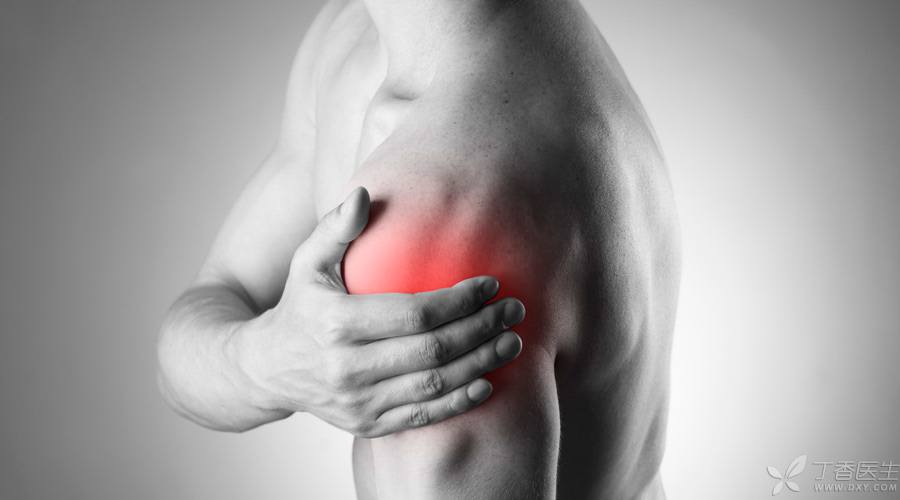
Shoulder pain is a very common worry. Many people naturally think that it may be caused by scapulohumeral periarthritis. It is good to have activities and diminish inflammation.
In fact, in the doctor’s view, shoulder pain is not simple, and blind activities may not help and aggravate your pain.
Shoulder pain is caused by scapulohumeral periarthritis?
It can only be said that [it is possible], but the reason is far from that simple.
There are really many causes of shoulder pain. Only from the perspective of orthopedics, the common causes are frozen shoulder, subacromion impingement syndrome, rotator cuff calcification, rotator cuff injury, inflammation or injury of biceps brachii long head tendon, acromioclavicular joint osteoarthritis…
Wait, why is there no scapulohumeral periarthritis in the reason?
In fact, Dr. Clove doesn’t like the word [scapulohumeral periarthritis] very much.
[scapulohumeral periarthritis] is an abused term. Seeing shoulder pain is generally referred to as scapulohumeral periarthritis, and activities are OK? Absolutely wrong!
Common neck and shoulder muscle strain and some cervical vertebra diseases may also lead to shoulder pain and shoulder mobility inconvenience. If the limitation of shoulder joint mobility is understood as [stiffness], and [massage] and [manipulation release] are performed as scapulohumeral periarthritis, the disease will become more serious, which is absolutely to be avoided.
Shoulder pain, don’t move in a hurry, let’s find out the cause before dealing with it.
Find the culprit of shoulder pain, and it is not too late to exercise again.
The so-called people with scapulohumeral periarthritis often have the two main symptoms of shoulder pain + shoulder mobility inconvenience.
However, the symptoms are only the external manifestations of the disease. If the cause cannot be found out correctly, there will definitely be no good rule of law. This is also the reason why we are warned not to blindly move.
The “scapulohumeral periarthritis” often mentioned in everyone’s mouth generally refers to “frozen shoulder” or “rotator cuff injury”, which will be discussed in detail below.
Step 1 Frozen Shoulders
Freezing the shoulder, as its name implies, means that the shoulder seems to be frozen and unable to move. Not only can one not move if one wants to (active activities are limited), but even if others help with the activities, one will find that the activities are not smooth (passive activities are also limited).
This is due to aseptic inflammation and fibrosis in the joint capsule, resulting in joint stiffness and limited movement.
But the good news is that the disease tends to heal itself. Even if it is completely ignored, some people will slowly improve.
How to deal with frozen shoulder: For frozen shoulder, active joint movement is helpful to relieve joint stiffness. Therefore, it is very beneficial to see a doctor first when shoulder pain occurs, and then take appropriate exercise after diagnosis of frozen shoulder.
> > > Click to view, exercise methods to relieve shoulder pain
2. Rotator cuff injury
Perhaps everyone is unfamiliar with this word, but it is not uncommon in life, for example, some intense sports may be triggered.
Tendons are attached to the shoulder joint to assist the movement of the shoulder. They are wrapped around the outside of the bone like sleeves. This structure is called rotator sleeve.
After rotator cuff injury, the sleeve of this auxiliary activity is broken, so the shoulder is not easy to lift (active activity is limited), but usually others can lift your arm (passive activity is less affected).
Treatment of rotator cuff injury: Once rotator cuff injury occurs, it cannot heal itself. Shoulder pain and limited movement are completely caused by shoulder joint tendon injury. Therefore, it is necessary to recuperate and avoid [the hole in rotator cuff is getting bigger and bigger].
In addition to reducing activity, arthroscopic rotator cuff repair is required when necessary to cure rotator cuff injury.
To sum up, the recommended way to deal with shoulder pain is not to lift lightly, especially to avoid raising your arm. It is wise to go to the hospital first.
Four Suggestions for Dealing with Shoulder Pain
-
If shoulder pain affecting shoulder joint movement occurs, it may be related to shoulder-related structural damage, and should not be regarded as [scapulohumeral periarthritis];
-
The vast majority of [middle-aged and elderly shoulder pain] is not [scapulohumeral periarthritis], and professional doctors should be invited to judge it.
-
Magnetic resonance examination is of great help to the diagnosis of shoulder pain and must be done when it is necessary.
-
For people with shoulder pain, they should decide whether to take active activities or avoid activities after clarifying the cause of the disease. Only in this way can they really help recover.
